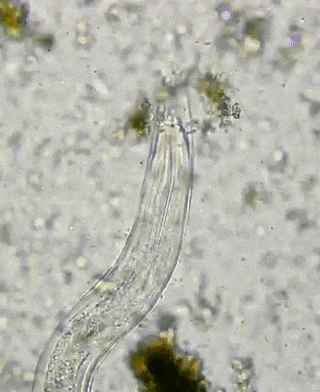Information
About biological soil testing
In a functioning soil food web, plants can control nutrient cycling in their root zone. Microorganisms provide plants with access to minerals stored in the soil, while plants in turn provide them with sugars. When plants are supported by this underground ecosystem, they are less susceptible to pests and diseases and have higher nutrient levels.
A Soil Food Web analysis measures the number of active organisms in a sample. Results include:
-
Bacterial biomass content
-
Fungal biomass content
-
Fungi to bacteria ratio (F:B)
-
Identification and number of protozoa
-
Identification and number of nematodes (function, either good or bad)
-
Identification of harmful microbial life that may indicate soil problems
Along with these numbers, you'll get an evaluation of the data that shows whether the results are in the right range for the crop you're growing, based on the ideal stage of succession for your crop. The full range of soils can be evaluated, from fields and hobby gardens alike. Composts can also be analyzed, as well as compost teas and extracts to determine their biological activity and effect.
The microorganisms seen on this page are a nematode (long, wormlike) and a flagellate (small and round).
Questions? Send me an email! Or call me!
For more in-depth information, see the Soil Food Web YouTube channel.



